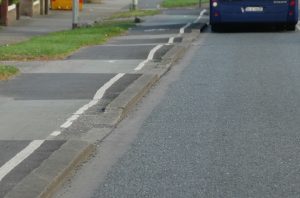Wexford was one of 7 counties that received funding for what are being referred to as ‘greyways’ under this recent active travel stimulus package.
In this blog I’m going to drill deeper in to what this means in terms of rider safety, overall value and highlight some potential pitfalls of this project.
In doing so, I will visit it’s sister project to the north of the county where hard shoulders were turned in to ‘cycle lanes’ in 2017.
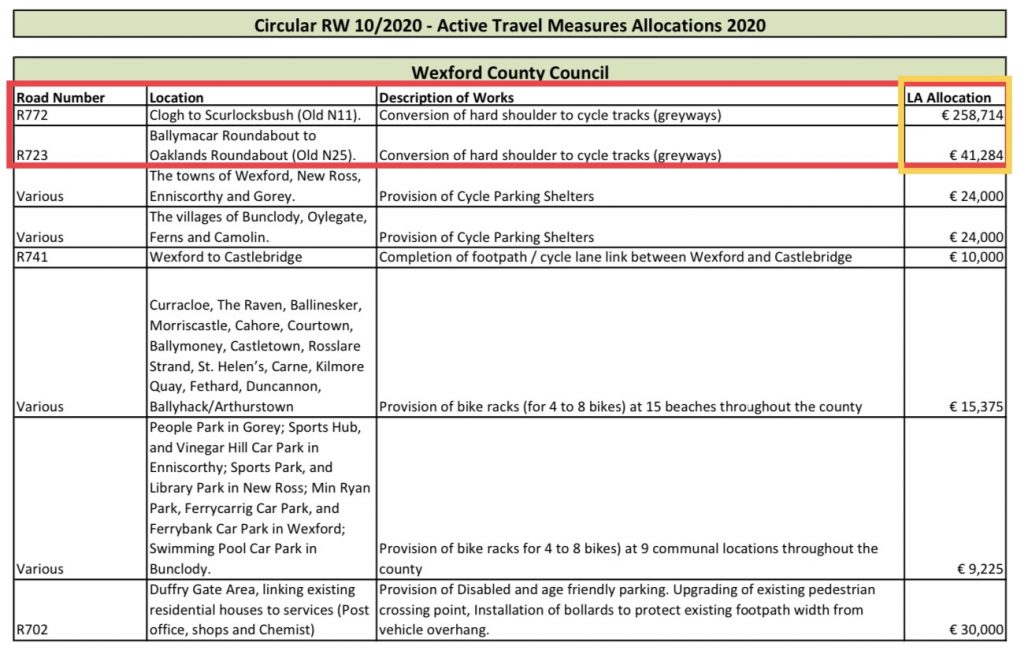
First of all you may ask.. What is a ‘greyway’?
This is something that hasn’t yet been defined and can be seen as a catchy buzz word to describe the ‘conversation of hard shoulder to cycle track’ as per description of funding granted to Wexford Co Co (above).
The term ‘greyways’ does not exist in the cycling infrastructure lexicon, and I think we need to question its use without clear design criteria and proper safety considerations.
In a bid to seek absolute clarity, I asked Minister James Browne to put this question to the Dept. of Transport and here is his question and the reply below.
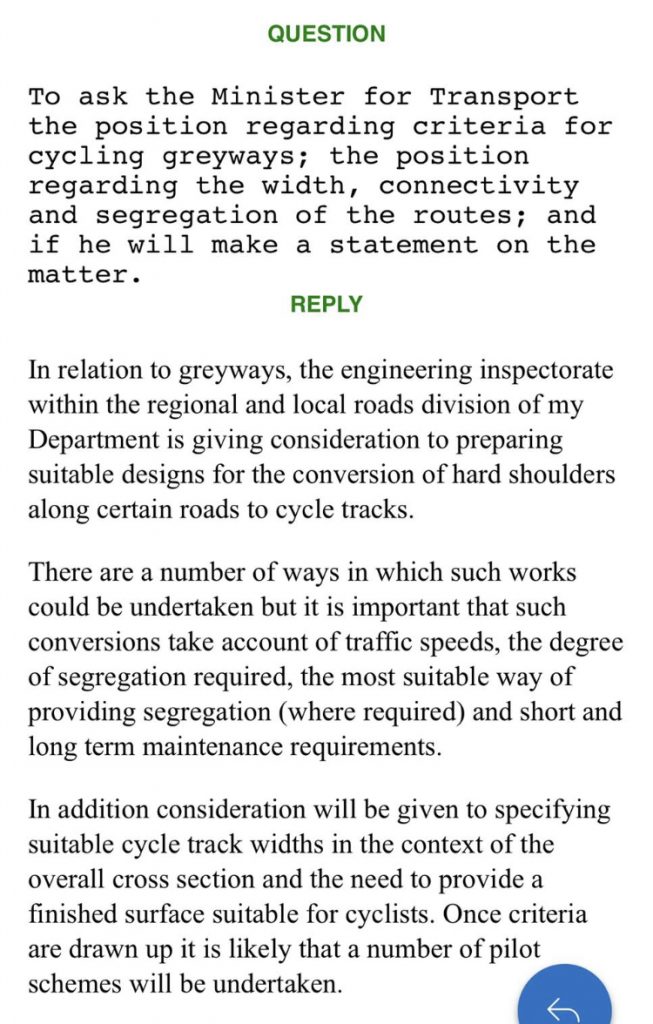
You can see see by this reply that ‘greyways’ have no status in the department of transport currently but you will see mention of suitable widths, segregation and surfacing.
You will also notice the last line which states ‘Once criteria (for Greyways) are drawn up it is likely that a number of pilot schemes will be undertaken’
Co. Wexford then are likely to become one of these pilot schemes.
Indeed I would argue that the previous poor offering that their previous project from Clogh roundabout to Tinnock roundabout where hard shoulders were converted to ‘cycle tracks’ was one such pilot project.
But are we in Co. Wexford jumping the gun without getting all our ducks in a row regarding suitable widths, segregation and surfacing?
More on this later but I want to return to the initial point of ‘Greyways’
When is a cycle track not a cycle track?
Wexford Co Co funding refers specifically to ‘cycle tracks’, and it’s important to understand what exactly that means. For that we need to go to the rules of the road and Transport Infrastructure Ireland’s publications for definitions.
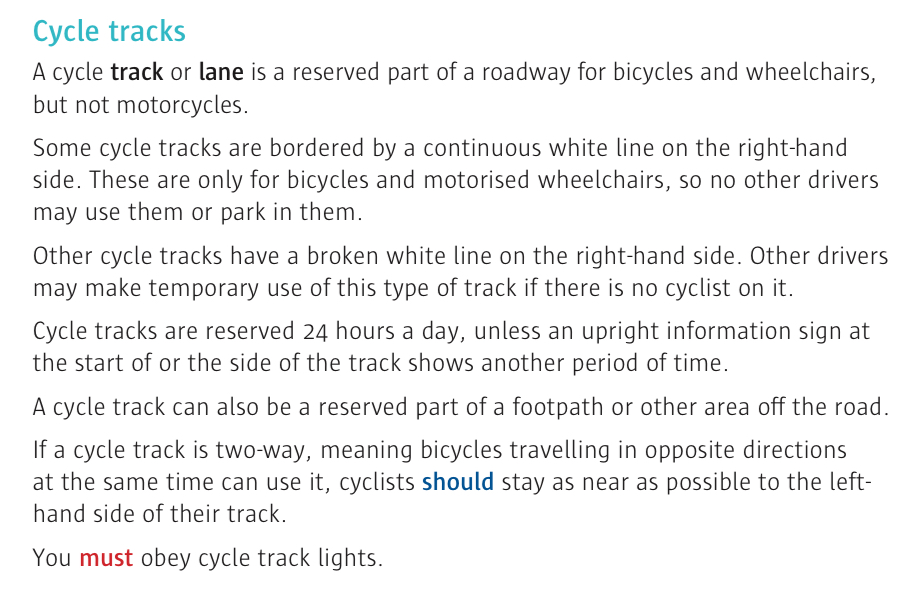
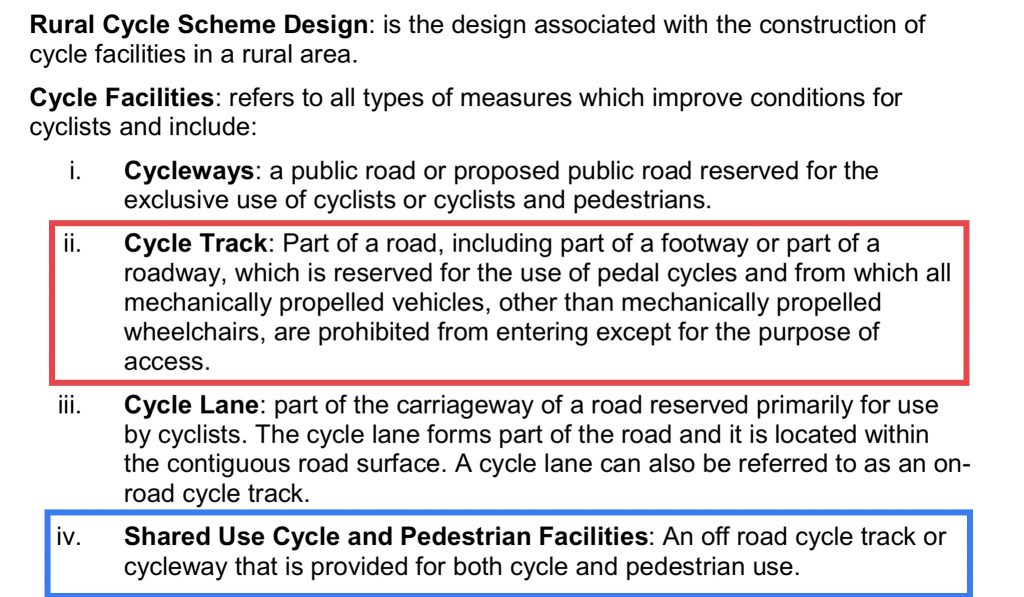
The new ‘Greyway’ that we will be getting in Co. Wexford will in fact not be a cycle track as defined in the rules of the road or the TII manual, but it will actually be a ‘shared use cycle and pedestrian facility’ as defined by the TII manual.
But wait.. Isn’t that the main purpose of these hard shoulders already according to the rules of the road?
(see image below).
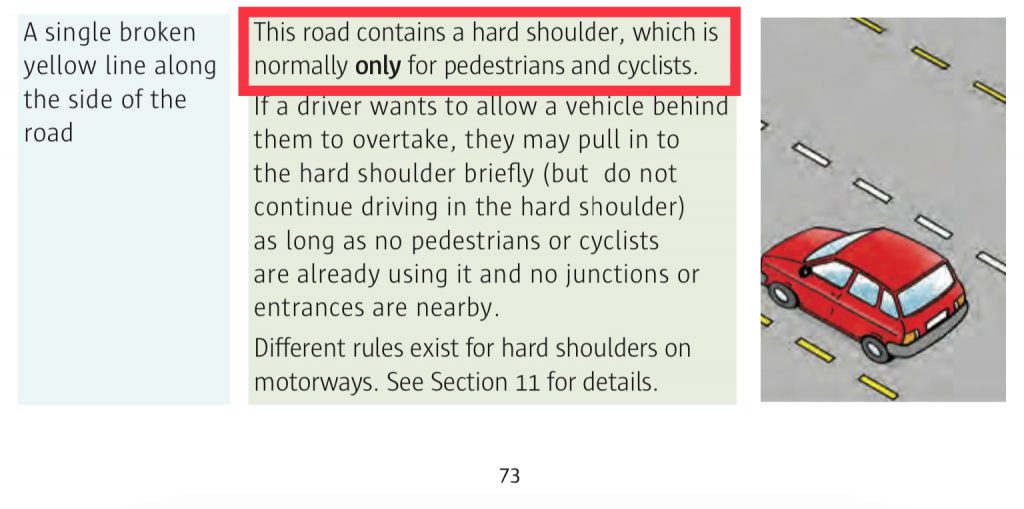
Basically according to the TII rural cycling Manual, ‘new cycle facilities should offer an advantage in terms of safety and attractiveness compared with the existing provision’.
In this blog I will take a closer look to explore this advantage or otherwise.
Spending over a quarter of a million euro on what may turn out to be little more than a symbolic marking of territory seems like poor value for money for me unless of course the offering of the existing hard shoulder is improved in the process.
This improved offering would need to consider consistent adequate width, segregation and surface as per Dept. Transport reference.
It would also need to provide for connectivity and plan for routine maintenance.
Otherwise is this merely a hard shoulder with an expensive line of paint added with little or no benefit?
Are we the Irish tax payer getting bang for our buck here?
In this next section, I want to deal with suitable widths, segregation and the provision of a suitable surface suitable for cycling (as per Dept. Transport reply to James Browne).
For the purpose of this, I will be visiting the Clogh Roundabout to Tinnock Roundabout completed project with references from the Transport Infrastructure Ireland’s 2017 Manual for Rural Cycleway Design.
Widths:
The existing hard shoulder along the proposed Greyway has long stretches that are of decent width.
It’s in areas where these hard shoulders pinch in or disappear altogether is where the challenge will be.
It’s unfortunate that the council didn’t step up to this challenge when carrying out cycle lane markings along the Clogh to Tinnock roundabouts section.
You will forgive my skepticism based on that project alone.
Below is a chart from the TII rural cycling Manual where measurements are given for desirable cycle lane widths and these are broken down to what is one step and two steps below what is deemed desirable.
Furthermore it allows for whether the section will be of high volume and low volume in terms of cyclist usage.

The repurposed R772 is really wide and if we are to improve the offering of the existing hard shoulder, I believe that we need to get this particular building block consistently right.
You will see from the above extract from the TII manual that the Lowest desirable minimum width allowing for 2 steps below the desirable standard for low traffic is 1.75 metres.
From communications that I’ve had with the council, they say they will endeavour to have a minimum width of 1.25 metres, a full half metre short of the 2 steps below desirable width and this is for a low use lane.
(The parameters of the council’s ‘endeavours’ have not been defined but I’m sure if I was building a house for example, I couldn’t tell the council that I would ‘endeavour’ to put my septic tank in a location of their choosing – they would rightly seek absolute surety and I believe we should for this too)
But why would Wexford Co Co not use as much space as possible and available for this project on such a wide road? (Remember this is now an ’R’ road – we are familiar with many much narrower regional roads in the county)
This would have zero impact on the movement of motorised vehicles and would future proof the proposed Greyway for segregation should funds become available at a later date..?
I would argue that this future proofing should have been carried out when most of this road was resurfaced and the hard shoulder re marked in the last couple of years.
When these hard shoulders got marked out, then this was always going to be more difficult.
I made this point in a recent article in the People Newspaper.

Width is not just about new build width, it’s also about usable future width.
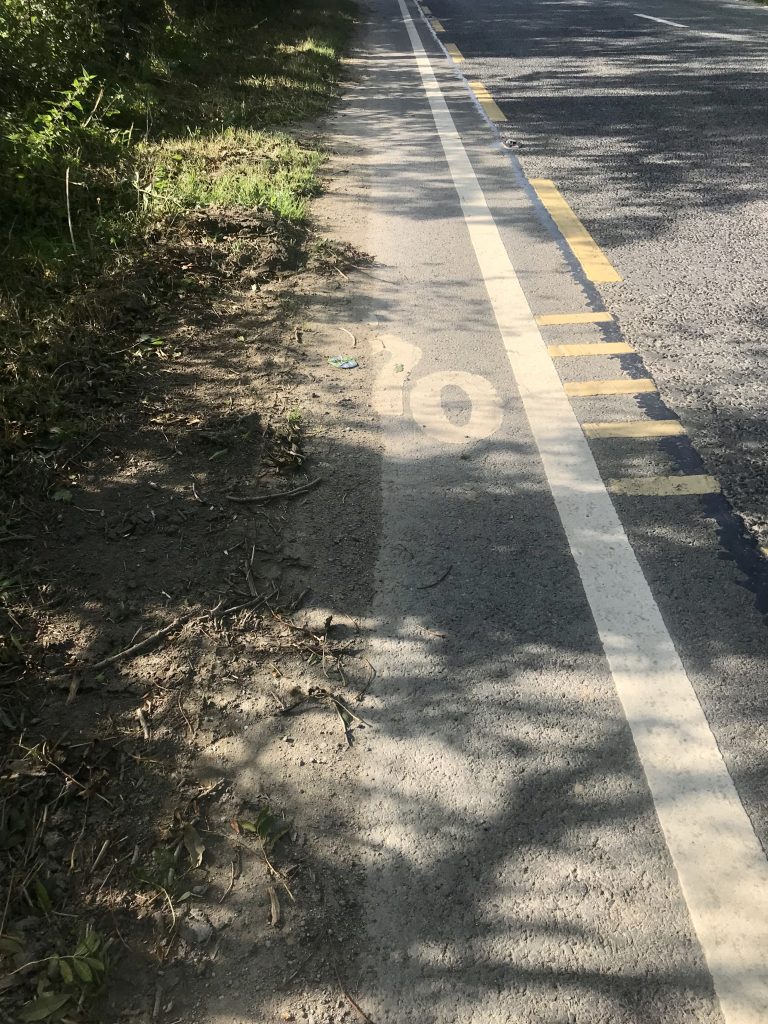
Along the already completed Clogh to Tinnock section, you will find many areas such as this (above image).
The effective width of the hard shoulder has been halved here with the non maintenance of the road verge along with the hard shoulder narrowing after the cycle lane paint had been applied.
Add in the loose debris and you are left with a space that is much less inviting that what the hard shoulder was in the first place.
These matters are important for a number of reasons.
If this project is intended to attract more users, then being able to consistently cycle 2 abreast certainly along the rural length, will be crucial.
In the same way that I may wish to go on a Sunday drive with my wife in my car, I wouldn’t want my better half to sit in the seat behind me.
This same rationale and sociability will apply to leisure cyclists cycling on a fit for purpose facility.
Indeed this is something referred to in the TII manual which states:
‘Cycling in a rural environment is a social activity and therefore sufficient width is required to allow cyclists to pair up or travel in groups.’
A similar rationale will apply if there is a parent cycling with a child; firstly we should be seeking segregation for this but in the meantime the very least a parent should expect is the be able to ‘shield’ a child by cycling on the outside.
This too is covered by the TII manual:
“When families travel together sufficient width for an adult to cycle parallel with young children for safety and reassurance reasons”
Endeavouring to provide 1.25 metres of width will simply not fulfil that need.
Unintended Consequences
One of the unintended consequences of repurposing hard shoulders is increased debris.
The act of motor traffic driving on hard shoulders as they currently exist, temporarily tends to keep this part of the carriageway clear of debris.
Painting a solid white line inside the hard shoulder would deter most motor traffic from entering this space allowing grit and other forms of debris to collect here making the surface conditions worse while maintaining the same low level of relative safety.
What we’ve seen too on the completed Clogh section is a lot of encroachment by tractors and other slow moving vehicles.
Adding a mandatory cycle lane marking here in theory at least, prohibits these vehicles from entering these lanes.
This isn’t the case with hard shoulders where pulling in briefly to allow faster moving vehicles to overtake is allowed.
I see many farmers using the existing hard shoulders on the proposed Greyway stretch and it would be naive to think that they won’t use the cycle lanes like some of their neighbours beyond Clogh do. (see image below)
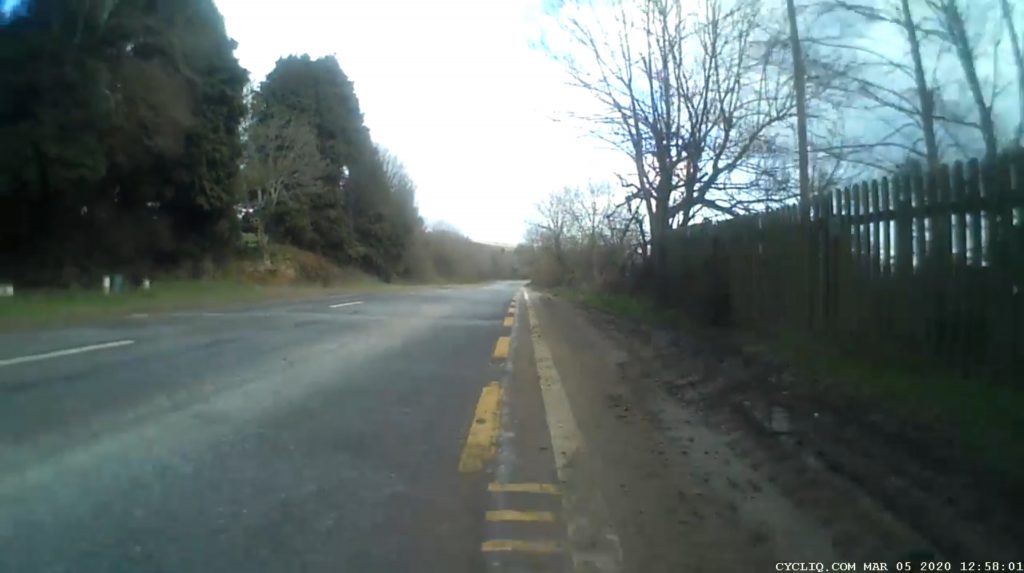
Debris then will be a large consideration if these lanes are fit for purpose.
In order to rectify this, I believe there would need to be a regular sweeping programme all along the new Greyway.
For such a long section, that’s a sizeable and most likely, expensive contract to put in place.
Judging from the already completed section, then I’m not convinced we will see a major departure here.
Another unintended consequence will lie in the the application of a continuous white line in this zone. Crossing these especially at an angle when they are wet increases the skid risk.
Consideration too needs to be given to strawberry vendors who sell their very tasty wares along this stretch of proposed Greyway. Will a blind eye be turned to cars queuing up on the new cycle path forcing riders out to the main carriageway or will a solution not involving such conflict be part of this project?
Another possible scenario that we are likely to see in the not too distant future is a body such as Sport Ireland overseeing and accrediting rural cycling routes.
They already to this for walking and cycling trails. If we build this Greyway to a standard below that recommended by Transport Infrastructure Ireland, then does this create the possibility of not getting accreditation down the track?
This part is really important in light of what Sustrans (who oversee the U.K. cycling network) did during the summer.
There the National Cycle Network lost almost a quarter of its 16,000 miles of UK-wide cycling and walking routes as part of an ongoing plan to improve safety standards.
Imagine after spending over €250,000 on a project, that this would be a possible future scenario….
This is probably a good time to bring in who this project is targeted at.
This is a well trafficked route used already by sports and leisure bicycle riders who find this relatively safe as it is.
If the purpose is to attract new users, then I’m not convinced of the benefit in adding a line of paint over and above what a hard shoulder would provide.
You will recall, the mention of segregation from the Department of Transport’s reply to James Browne’s question?
That’s what you really need to attract new users but I believe this is not part of this project. I would argue that the addition of added width would allow for segregation in the future should funds become available.
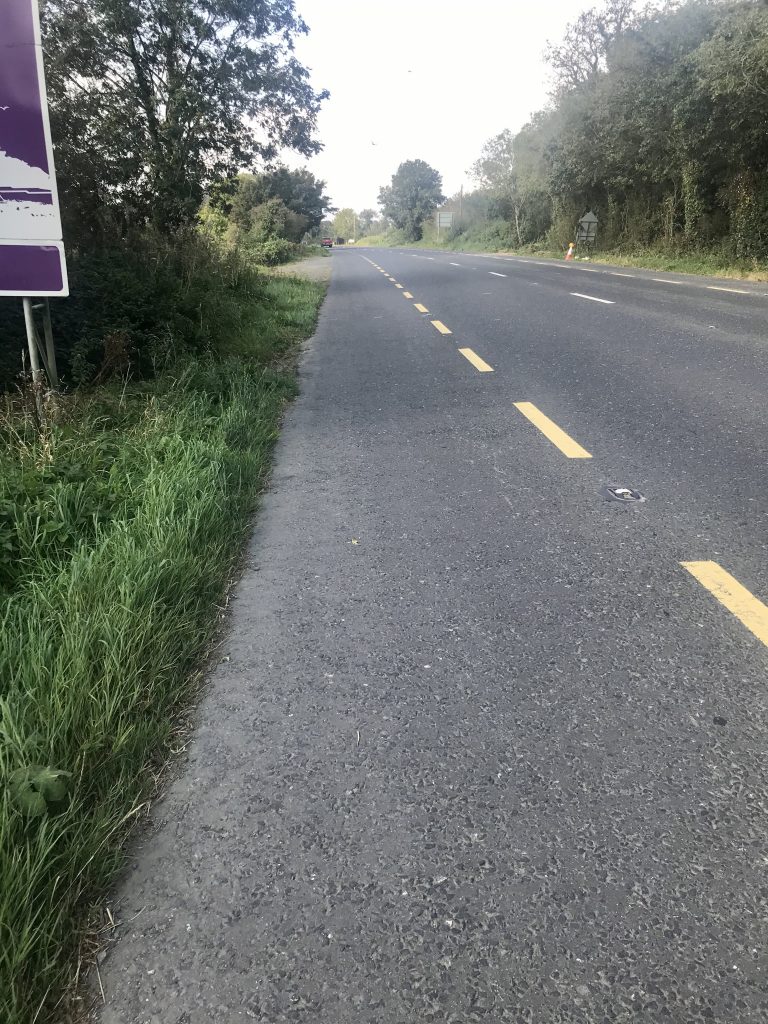
The importance of safe connectivity.
When we examine the proposed stretch between the Cloch Roundabout and Skurlocksbush Roundabouts from a safety perspective, it throws up some interesting facts;
Along the full length of both directions of this road where hard shoulders exist, just one minor cyclist injury was recorded by RSA cyclist collision figures for the ten year period from 2005 – 2016.
However, there were 4 injuries on this stretch in areas of this targeted route that don’t have hard shoulders..
This includes one fatality.
These collisions occurred in towns along the route and at a roundabout.
In a nutshell, people on bicycles feel relatively safe on these hard shoulders when they are consistent, but there are issues along the way such as junctions, areas where the shoulder drastically pinches in, roundabouts, towns and villages that may need prioritising over sections that are already relatively safe.
One such example would be the hard shoulder inside the mandatory left turn for the L6066, Industrial Estate on the southbound approach to Enniscorthy (pictured below).
I would be curious as to how Wexford Co Co plan on making it safer for bicycle riders to continue straight along the road here for example..
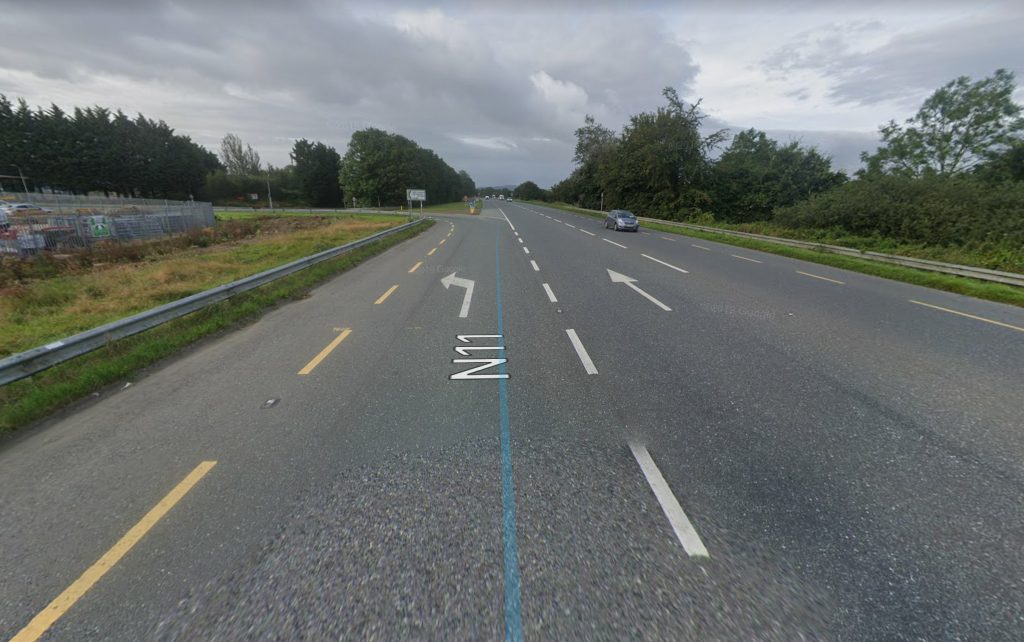
Another such example would be at the Northbound turn off for Camolin meat plant where the hard shoulder pinches in to an unusable width.
Will we see some type of road realignment here or will we see the hard shoulder widened with the addition of extra tarmac in the available space?
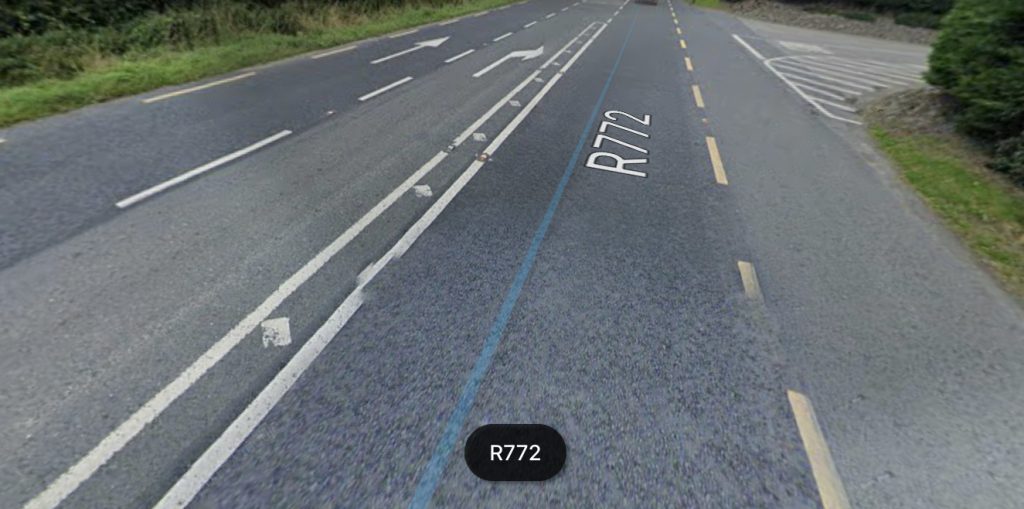
What we can’t accept being done here in such pinched-in shoulders is what the council did on the previous section leading in to Clogh where there was simply paint added inside the narrowing whilst paying scant regard to the cycle lane width.

These are just some examples of problematic sections of the existing hard shoulder.
We need to understand that the flying bicycle has not been invented yet and connectivity is a crucial aspect of improving the offering and providing value for money.
Surfaces.
Under the TII manual section that deals with comfort:
“Generally cyclists prefer sheltered, smooth, uninterrupted, well-maintained surfaces with gentle gradients. Cycle facilities should meet surface width, quality and gradient standards and be convenient, avoiding complex manoeuvres”
Road cyclists really appreciate smooth surfaces and when you view this proposed Greyway section from the window of a car, the hard shoulder looks fine.
However if you cycle along it, you will come across segments where the surface is very worn.
One particular bad section is just outside Camolin at the Ferns side.
The main carriageway here was resurfaced here recently but the hard shoulder remained untouched. (see pic below)
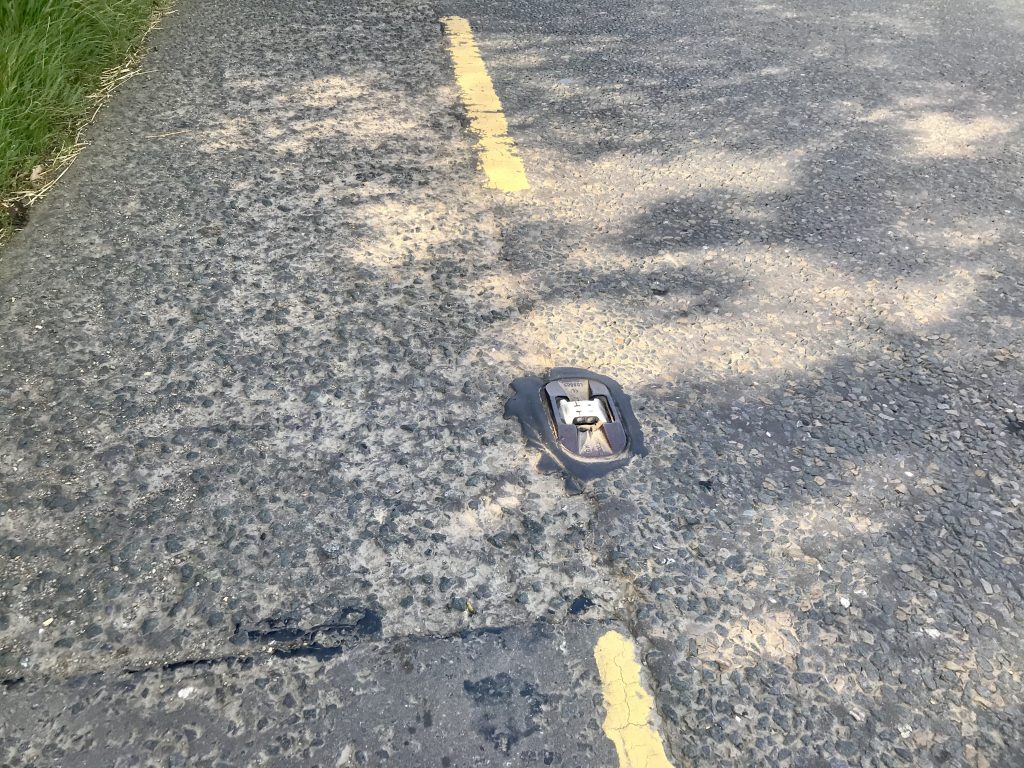
If there was some type of long term plan at the time to add a cycle track here, surely it would have been prudent to include the hard shoulder in the resurfacing at the time?
Without this type of planning you can end up with an ad hoc reactivate project.
Conclusion
For me there are too many unanswered questions regarding Greyways in general.
Off the bat, a project like this should provide hope for better cycling conditions but having seen the mostly completed Tinnock to Clogh roundabout works, it leaves me with a lot of trepidation here.
With that being said, there is much potential here if this is done correctly.
Specifically to this project, it could be really good. (Link)
Done properly, we could indeed open up the beginning of a really good spine of cycling infrastructure right up through our county and future links could lead to a decent network.
Unfortunately for the council to draw down on this funding, this project needs to be completed by the end of November.
I would hate to see this rushed and lead to the same mistakes that we have seen on the already completed section.
Retrofitting this could prove prohibitively expensive.
As a cyclist, motorist and taxpayer I would like to see this being a value for money project with stated aims and measurable outcomes.
Greyway standards need clear design guidelines and guaranteed safety for cyclists. Without those, then what do we expect to achieve here?
I think the key question here lies in the TII rural cycling infrastructure manual – ‘new cycle facilities should offer an advantage in terms of safety and attractiveness compared with the existing provision’.
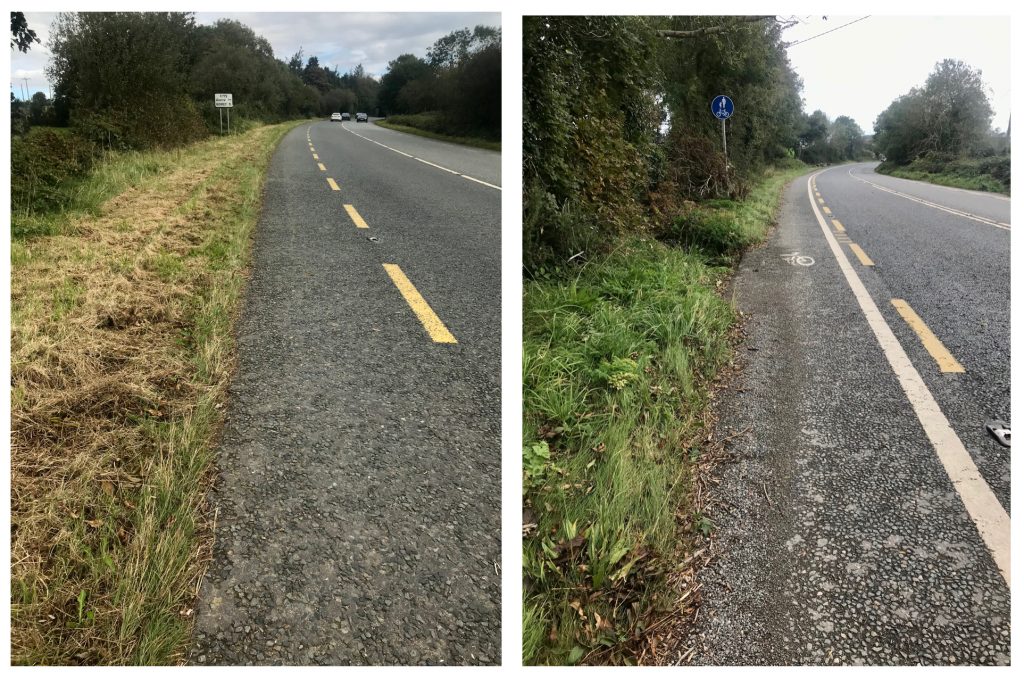
I would argue that the situation of the right image above does not ‘offer an advantage in terms of safety and attractiveness compared with what would have been similar to the existing provision.
However, if we were to go to this provision (pictured below), then the advantage in terms of safety and attractiveness is clear. We wouldn’t need to do this all in one go as it’s potentially a fairly expensive project but why not get the building blocks in place to future proof the notion.
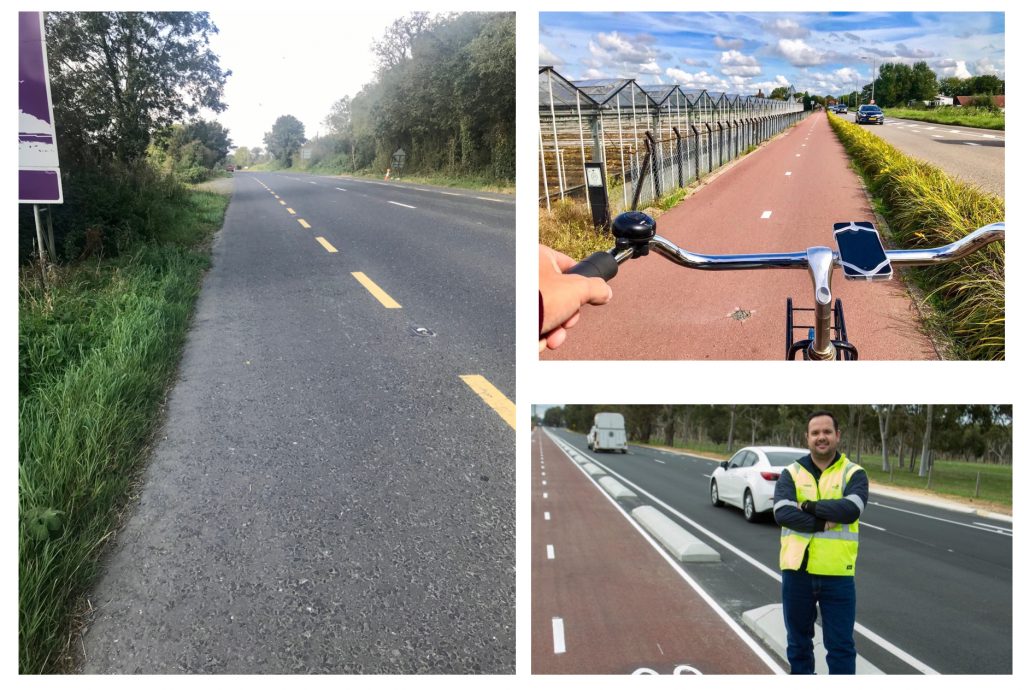
I think that the very least we should be seeing now is a detailed design of what is being proposed along the entire route.
I have offered to meet with relevant council officials in a bid to try to micromanage this in greater detail.
I have even recorded the entire route on my bike cam so that the engineers can get a first person view of some of the challenges and possible solutions.
I can do no more than that.
Phil.


